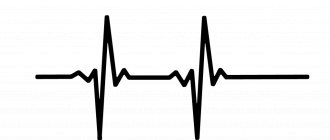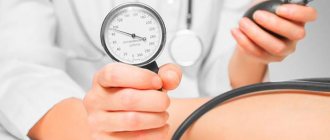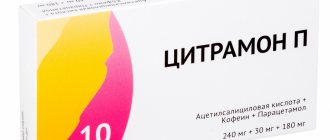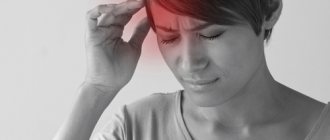One of the first symptoms of low blood pressure is a headache. It is typical for both high and low blood pressure, but has some differences.
With high blood pressure, the pain is throbbing, concentrated in the temples or back of the head. It may be accompanied by visual disturbances and other unpleasant symptoms. With low pressure, the headache is diffuse, does not pulsate, and is accompanied by severe weakness. But you can accurately find out your blood pressure only by measuring it with a tonometer.
First aid for high blood pressure
If you have a headache, the first thing you need to do is measure your blood pressure with a tonometer. Its increase to 140/90 or more indicates the likelihood of hypertension and crisis. If this occurs for the first time, you should definitely consult a doctor or call an ambulance. You should not take any medications without examination and prescription from a doctor. To alleviate the condition, you need to lie in a bed with a high pillow, put a cold towel on your head and wait for the doctor. If you have already been prescribed medications for blood pressure, you need to take those that are intended for emergency use. As a rule, it is kapoten or corinfar.
Where does your head hurt and what does it mean?
- Where does it hurt: the whole head.
- What: Tension headache.
Monotonous, pressing, dull pain throughout the head. Tension headaches are accompanied by fatigue, weakness, nervousness, sleep and appetite disturbances, and increased sensitivity to bright light and loud sounds. The headache usually worsens in the evening.
The main causes of such pain are mental stress and prolonged muscle tension (sitting behind the wheel of a car, sitting at a computer monitor, reading a book, etc.).
What to do: take a hot bath and a sedative, watch a light movie, go for a walk, go to the pool or gym.
- Where it hurts: in the eye area, sinuses.
- What: sinusitis, nasal congestion.
When bending or suddenly moving the head, the pain intensifies. Often accompanied by an increase in temperature.
What to do: rinse and warm your nose, if necessary (sinusitis), take antibiotics prescribed by your doctor.
Sinusitis: causes, symptoms and types of inflammation Read more
- Where it hurts: headache in the back of the head.
- What : high blood pressure.
Pressing pain, accompanied by spots before the eyes, dizziness, and ringing in the ears. Occurs due to high blood pressure.
What to do: measure your blood pressure. Depending on the tonometer readings, either call a doctor, or an ambulance, or reduce the pressure using usual means.
Article on the topic
Brain catastrophe. What leads to a stroke?
- Where does it hurt : half of the head
- What : stroke
Acute growing pain in one half of the head is a serious sign of a stroke. Try smiling, raising your hands and saying your name. If you manage to smile with half your mouth, you can only raise one hand, there is porridge in your mouth, you need the help of a doctor.
What to do: Call an ambulance immediately! Remember that the therapeutic window for stroke (the time when medical care has the maximum effect) is about 4 hours.
- Where does it hurt : the whole head.
- What : hangover.
If you took a large amount of alcohol the day before, and the next morning you have a dull throbbing pain in your head, this is a hangover headache.
What to do: The best way to survive a hangover is to go to bed. If this is not possible, take a contrast shower, drink more, go out into the fresh air. As a last resort, you can take hangover medicine.
Sorry, I drank too much! How to relieve a hangover Read more
- Where it hurts: in the crown area.
- What : infections and viruses.
Headache is accompanied by nausea, dizziness, photophobia, tinnitus, and often fever. If there is no “accompaniment”, pain in the crown area may be a manifestation of cervical osteochondrosis.
What to do: keep bed rest, drink more (mineral water, green tea), in case of high temperature, take an antipyretic.
- Where it hurts: in the temple area.
- What : migraine.
Throbbing, increasing pain lasts from several hours to several days. In this case, a person reacts sharply to smells, light and loud sounds.
Migraines often occur after drinking red wine, aged cheese, or smoked meats. To achieve lasting improvement, it is enough to exclude these foods from your diet.
Question answer
Can perfume cause asthma and migraines?
What to do: Depending on the intensity of the pain, either use home remedies or consult a doctor.
Treatment of headaches with low blood pressure
If the tonometer reading is less than 90/60, then the pressure is low. It is dangerous to increase it sharply with the help of strong medications. Be sure to consult your doctor before taking medications. What you can do at home:
- Drink a cup of strong tea with sugar or coffee.
- Lie in bed with your head slightly lowered and your legs raised.
- Take a tablet of the over-the-counter drug Panadol or Citramon. Citramon contains caffeine, which increases blood pressure, and paracetamol, which relieves pain.
Treatment
Do not take pills on your own for headaches and high blood pressure! Even if you know for sure that a surge in pressure causes you a headache, there can be many mechanisms for its occurrence.
Typically, the doctor prescribes drugs from the group of analgesics, antispasmodics, calcium channel blockers or selective beta blockers. In some cases, diuretics are also recommended. As the fluid is removed, the pressure also decreases. Preventive measures also deserve special attention.
What to do with fluctuating pressure?
It often happens, especially in older people, that the pressure is either high or low. As soon as you take a pill for the high, it goes down, and you feel completely out of control again. What to do in such cases?
First, you need to remember that low blood pressure is not as dangerous as high blood pressure. With high blood pressure, a complication can be a stroke, and low blood pressure, as a rule, does not threaten anything other than poor health. Therefore, it is necessary to reduce high blood pressure, even if there is a danger of lowering it too much.
Secondly, you should not try too hard to increase low blood pressure, otherwise this may lead to a crisis. The simple home measures listed above are sufficient. If your head hurts very badly, the same Paracetamol will help, which does not affect blood pressure, but perfectly relieves unpleasant symptoms.
To keep your blood pressure stable, you need to lead a healthy lifestyle regardless of age, walk as much as possible and be in the fresh air. As the latest research shows, the best way to prevent blood pressure disorders is moderate physical activity.
And if walking or exercise causes discomfort, treatment by an osteopath can help. Often the reasons why a person is unable to move can be treated with osteopathic methods. Instead of sitting in your apartment drinking handfuls of pills, you can use osteopathy to put your body in order and begin active prevention of cardiovascular diseases.
Pain in the temple area
Arthritis
14211 October 28
IMPORTANT!
The information in this section cannot be used for self-diagnosis and self-treatment.
In case of pain or other exacerbation of the disease, diagnostic tests should be prescribed only by the attending physician. To make a diagnosis and properly prescribe treatment, you should contact your doctor. Pain in the temple area: causes of occurrence, what diseases it occurs with, diagnosis and treatment methods.
Definition _
Pain in the temple area is one of the most common complaints that brings patients to the doctor.
In the bone structures of the skull and brain tissues, pain sensitivity is insignificant, so the main sources of pain are blood vessels, meninges and cranial nerves.
Types of pain in the temple area
According to the International Classification of Headaches 3 (2013), all headaches are divided into:
- for primary pain not associated with diseases of the brain and other structures of the head and neck;
- secondary pain associated with other diseases;
- painful cranial neuropathies, other facial and headaches.
Possible causes of pain in the temple area
Arterial hypertension
is one of the common causes of headaches in the back of the head and temples. When pressure increases, attacks of headaches occur, which may be accompanied by nausea, vomiting, and “spots” before the eyes.
Tension headache
– one of the common reasons for visiting a neurologist and therapist. Patients characterize it as squeezing, pressing.
Tension headaches interfere with quality of life and performance, despite the fact that they are considered benign and do not carry serious consequences.
Migraine
is the most common form of attack-like headache.
Migraine is characterized by localization of pain in the temporo-frontal-orbital region and a paroxysmal nature of the course.
If the pain is not paroxysmal, then it is not a migraine. Seizures can occur on one side of the head or on both sides, and can also change their location (right-left).
A headache attack can occur at any time of the day, more often during a night's sleep in the morning or after waking up. The pain is pulsating, bursting, with a gradual increase in intensity over several hours. Before the onset of an attack, a so-called aura is possible (harbingers of pain, they vary from person to person, but are often described as disturbances in vision, speech, or dizziness). The pain intensifies in bright light, from loud sounds and other irritants, including changes in head position. The attack can last up to several days.
Harris' periodic migraine neuralgia
- characterized by the sudden onset of pain in the eye area on one side and spreading to the temporal, frontal and zygomatic areas, and sometimes even to the neck.
Unlike migraines, there are no warning signs of pain.
The pain is burning, cutting, bursting, accompanied by redness of the eye and lacrimation on the painful side. Some patients experience a sensation of the eye “bulging out of its socket.” All these attacks are characterized by a certain seasonality or periodicity. The duration of the attack ranges from 6–8 weeks to 3 months.
Pain in the temple area may occur immediately after drinking cold water
or ice cream due to arterial spasm. In this case, the pain is aching, squeezing, sometimes throbbing.
Cold pain occurs in individuals with increased sensitivity to cold stimuli and high reactivity of the body.
“Sausage” headache
(in English-speaking authors -
hot dogs headache
) occurs when eating foods containing food additives such as sodium nitrate. During a chemical reaction in the body, nitrate is converted into nitrite, which has a vasomotor effect (controlling the process of contraction and relaxation of the muscular lining of the walls of blood vessels, and, consequently, the lumen of blood vessels), and sensitive people may feel pain in the frontotemporal region.
A similar effect sometimes occurs when eating Chinese dishes (“Chinese restaurant headache”), where monosodium glutamate is often used.
Giant cell arteritis
is the most common systemic vasculitis in the world, affecting large vessels. The favorite localization of this disease is the temporal artery. Most often, the pain is intense, accompanied by limited function of the corresponding temporomandibular joint, blurred vision with its gradual decrease, and a hardened artery in the temple area is detected.
Without treatment, it can lead to permanent blindness of the eye on the affected side.
With inflammatory diseases of the ear,
pain in the temporal and parotid region is possible, which is accompanied by fever, redness, swelling in the ear area, and purulent discharge from the ear.
Meningitis
develops when an infectious agent enters the membranes of the brain, followed by an inflammatory process.
The headache is sudden, sharp, diffuse, predominant in the frontotemporal areas, sometimes accompanied by vomiting.
Neuralgia of the auriculotemporal nerve
often occurs after an inflammatory process or traumatic lesion of the parotid gland. It is characterized by burning, throbbing pain in the area of the external auditory canal, temple, temporomandibular joint, radiating to the lower jaw. The pain is accompanied by increased salivation and redness of the skin over the affected area. Attacks are triggered by eating and smoking.
Neuralgia of the ear ganglion
manifests itself as attacks of burning pain in the temporal region lasting from several minutes to an hour. May be accompanied by ear congestion and increased salivation.
For altitude sickness
There is a change in arterial tone due to reduced oxygen pressure and changes in barometric pressure. Headache is accompanied by shortness of breath, palpitations, and blurred vision.
The severity of symptoms depends on the speed of ascent to altitude.
The pain is relieved by applying cold to the temples and drinking cool water.
Traumatic lesion of the temporal region
may be the cause of pain. This includes a wide group of pathologies: fracture of the temporal bone, dislocation of the temporomandibular joint, soft tissue contusion.
Subarachnoid hemorrhage
occurs for various reasons, for example, as a result of a rupture of a cerebral aneurysm, a person feels like a strong blow to the head, hot liquid pouring into the head, strong contraction, and then bursting. The pain may initially be localized in the corresponding part of the head - in the temporal region when an aneurysm of the internal carotid artery ruptures.
Damage to the temporomandibular joint
(both inflammatory - arthritis, and non-inflammatory - arthrosis, malocclusion) may be accompanied by pain in the parotid and temporal region. When moving the lower jaw, crunching and clicking may occur in the joint; the pain intensifies when chewing and during conversation.
Which doctors should I contact if I have pain in my temples?
If you experience intense and recurring pain in your temples, you should consult a specialist.
If pain persists after taking painkillers or other symptomatic treatment previously prescribed by your doctor (for example, to lower blood pressure), and there are no signs of injury, you should contact or. Depending on the accompanying symptoms, you may need to consult a neurologist, rheumatologist, otolaryngologist, or ophthalmologist. In case of previous injury, it is necessary to contact a traumatologist or to exclude severe injury.
Diagnostics and examinations for pain in the temples
The list of examinations is prescribed by the doctor depending on the indications. An approximate list of studies that may be prescribed:
- computed tomography of the head;
Is it necessary to do an ultrasound?
— Where to go to find out the cause of your headache? Which specialist? Maybe an ultrasound of the brain and neck - as is usually recommended on the Internet - should be done?
— Ultrasound of the neck vessels is a safe procedure. Everyone does it. As for ultrasound of the vessels of the head, it cannot be done for everyone. Because if a person has a thick bone structure, then ultrasound does not always pass through it, and it will not be possible to see the vessels of the head.
And in general, ultrasound examination of blood vessels is to some extent inaccurate. Using ultrasound, we can see stenosis, narrowing of blood vessels, changes in blood flow speed, but it is impossible to accurately measure how narrowed the vessel is using ultrasound data alone. For this, there is CT with contrast or direct angiography - more informationally reliable studies.
— Who is prescribed an ultrasound of the neck vessels?
— Those who have risks of blood clots, atherosclerotic changes - plaques. We also often prescribe ultrasound of the neck vessels, especially the vertebral arteries, for some forms of dizziness, since the tortuosity of the neck vessels can disrupt the blood supply to the brain, and then turning the head to the side, throwing the head back can one way or another lead to the development of some neurological changes.
Uncomplicated hypertensive crisis
Hypertension occurs so often that it has already become something commonplace and familiar, which people brush off: just think, my blood pressure has risen, I’ll take the usual pill, lie down and it will go away. However, everything is not as simple as it seems.
Emergency
Like many chronic diseases, hypertension is fraught with emergency conditions, namely crises. A crisis is an increase in blood pressure (BP) above normal values
, accompanied by clinical symptoms and requiring immediate
controlled
reduction.
“Above the usual values” is important. There is an opinion that hypotensive people cannot have hypertensive crises, but this is not so. When blood pressure increases from the usual 90/60 to 130/80 (which is considered normal according to the generally accepted classification), a person may experience a real crisis.
Blood pressure readings
- Normal pressure is from 90/60 mm Hg. Art. up to <120/80 mmHg Art.
- Prehypertension (risk factor for the development of arterial hypertension) - 120–129 mm Hg. Art. / <80 mmHg Art.
- Arterial hypertension 1st degree - 130–139 mm Hg. Art. or 80–89 mm Hg. Art.
- Arterial hypertension 2 degrees - ≥140 mm Hg. Art. or ≥90 mm Hg. Art.*
*American Heart Association classification.
Online blood pressure calculator on the NHS website.
American College of Cardiology online cardiovascular risk (stroke, heart attack and other diseases) calculator (risk of complications for patients with high blood pressure over the next 10 years and beyond).









